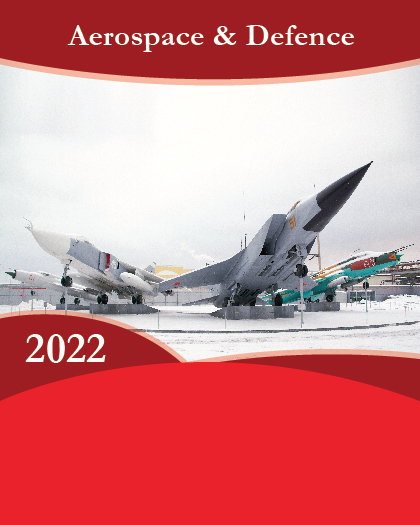
Global Medium and Large Satellite Market is valued at approximately USD 7.90 billion in 2022 and is anticipated to grow with a healthy growth rate of more than 4.7% over the forecast period 2023-2030. Medium and large satellites refer to categories of artificial satellites based on their size, weight, and capabilities. Medium satellites are typically characterized by their moderate size and weight. They are larger than small satellites but smaller than large satellites. The weight of a medium satellite can range from a few hundred kilograms to several thousand kilograms. These satellites often have a size ranging from a few meters to around 10 meters in length. Large satellites are generally the heaviest and most substantial in size among artificial satellites. They can weigh several tons and have dimensions ranging from tens of meters to even larger sizes. Large satellites are often used for advanced communication networks, global positioning systems (GPS), weather monitoring, military surveillance, and deep space exploration missions. The Medium and Large Satellite market is expanding because of factors such as increasing space exploration projects and increased demand for military reconnaissance and communication applications.
There has been an excess of satellite demand for communication and military reconnaissance applications. Governments, space agencies, defense agencies, private defense contractors, and private space industry players place a strong emphasis on improving communication network capabilities for civilian and military reconnaissance uses such as intelligence, surveillance, target, and data acquisition applications. For instance, The Defense Acquisition Program Administration (DAPA) of South Korea awarded contracts worth USD 307 million to Hanwha Systems and LIG Nex1 in September 2021 in connection with ANASIS-II, the nation's first dedicated military communications satellite. NASA and private firms reached a USD 280 million agreement in April 2022 to begin developing near-Earth space communication services. The companies are creating and displaying technologies for communications near Earth. Among the commercial companies are SpaceX, Kuiper Government Solutions, Viasat Inc., Inmarsat Government, SES Government Solutions, and Telesat U.S. Services. The launch of four other missions this year, the orbiting of 24 Earth scientific projects, and the launch of four more missions in 2022 were also announced by the space agency. In June 2022, the United Launch Alliance and SpaceX signed an agreement with the U.S. Space Force for missions that would launch over the ensuing two years, totaling USD 846 million. Thus, the rising number of space exploration activities is driving the market growth. In addition, rising government spending on defense and space programs and the rising utility of satellite imaging for homeland security and defense are creating new opportunities for market growth. However, the high initial investment in space infrastructure with satellite components and installations stifles market growth throughout the forecast period of 2023-2030.
The key regions considered for the Global Medium and Large Satellite Market study includes Asia Pacific, North America, Europe, Latin America, and Middle East & Africa. North America dominated the market in 2022 owing to factors including increasing funding for R&D activities, an increase in the number of satellite development projects and space programs, and government support for the space sector. On the other hand, Asia Pacific is predicted to have significant growth as a result of factors including expanding space exploration activities, rising number of research and development programs as well as expanding space budgets in the region.
Major market player included in this report are:
Airbus SAS
Lockheed Martin Corporation
L3Harris Technologies Inc.
Space Exploration Technologies Corporation
National Aeronautics and Space Administration
Northrop Grumman Corporation
Sierra Nevada Corporation
Singapore Technologies Engineering Ltd
The Boeing Company
Thales Group
Recent Developments in the Market:
In May 2023, SpaceX launched the American ViaSat-3 broadband satellite with a Falcon Heavy rocket. The Falcon Heavy was launched from Florida's NASA Kennedy Space Centre on its sixth rocket mission since the beginning of 2018 with the intention of reaching geostationary orbit (GEO).
Global Medium and Large Satellite Market Report Scope:
Historical Data: 2020 - 2021
Base Year for Estimation: 2022
Forecast period: 2023-2030
Report Coverage: Revenue forecast, Company Ranking, Competitive Landscape, Growth factors, and Trends
Segments Covered: Orbit, Application, End-User, Payload, Region
Regional Scope: North America; Europe; Asia Pacific; Latin America; Middle East & Africa
Customization Scope: Free report customization (equivalent up to 8 analyst's working hours) with purchase. Addition or alteration to country, regional & segment scope*
The objective of the study is to define market sizes of different segments & countries in recent years and to forecast the values to the coming years. The report is designed to incorporate both qualitative and quantitative aspects of the industry within countries involved in the study.
The report also caters detailed information about the crucial aspects such as driving factors & challenges which will define the future growth of the market. Additionally, it also incorporates potential opportunities in micro markets for stakeholders to invest along with the detailed analysis of competitive landscape and Orbit offerings of key players. The detailed segments and sub-segment of the market are explained below:
By Orbit:
LEO
MEO
GEO
Others
By Application:
Earth Observation
Navigation and Global Positioning
Communication
Others
By End User:
Commercial
Government
Military
By Payload:
Up to 5000 kg
5000 to 10000 kg
Above 10000 kg
By Region:
North America
U.S.
Canada
Europe
UK
Germany
France
Spain
Italy
ROE
Asia Pacific
China
India
Japan
Australia
South Korea
RoAPAC
Latin America
Brazil
Mexico
Middle East & Africa
Saudi Arabia
South Africa
Rest of Middle East & Africa
























